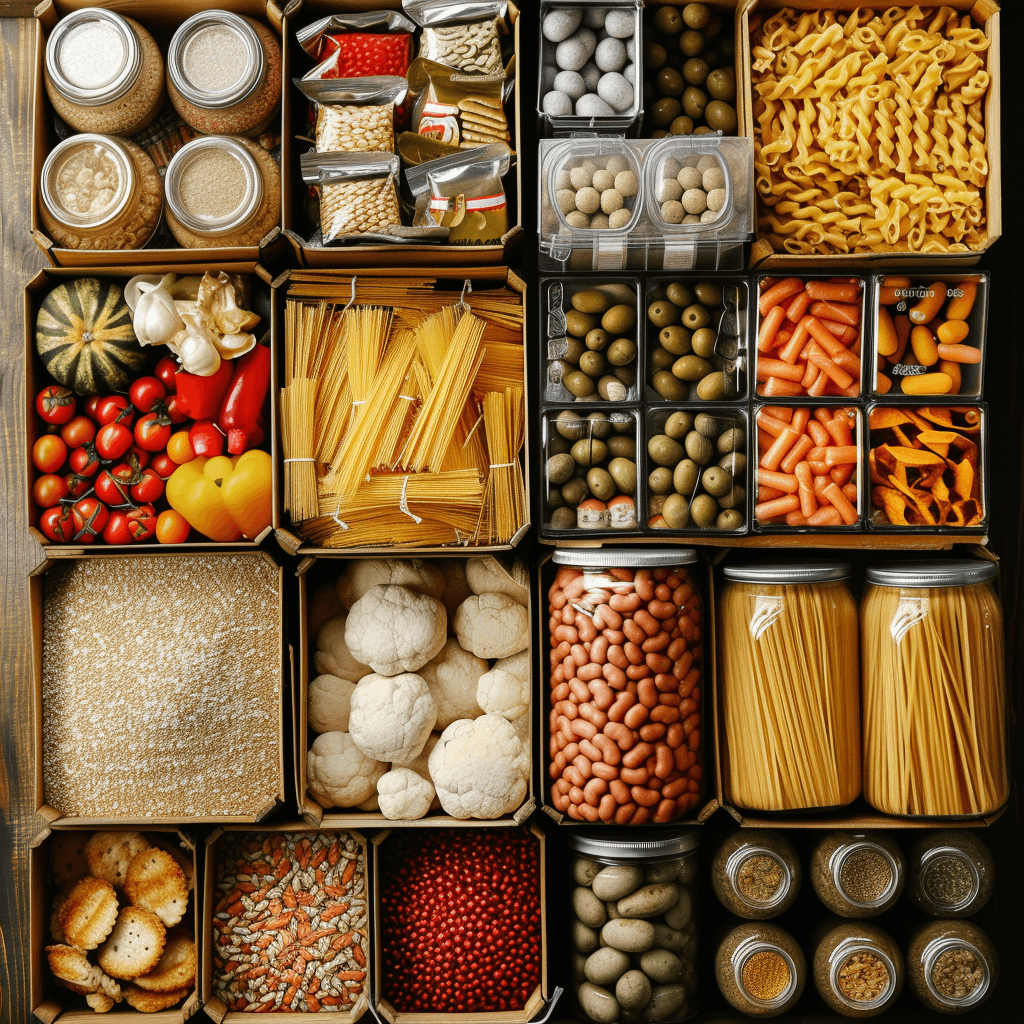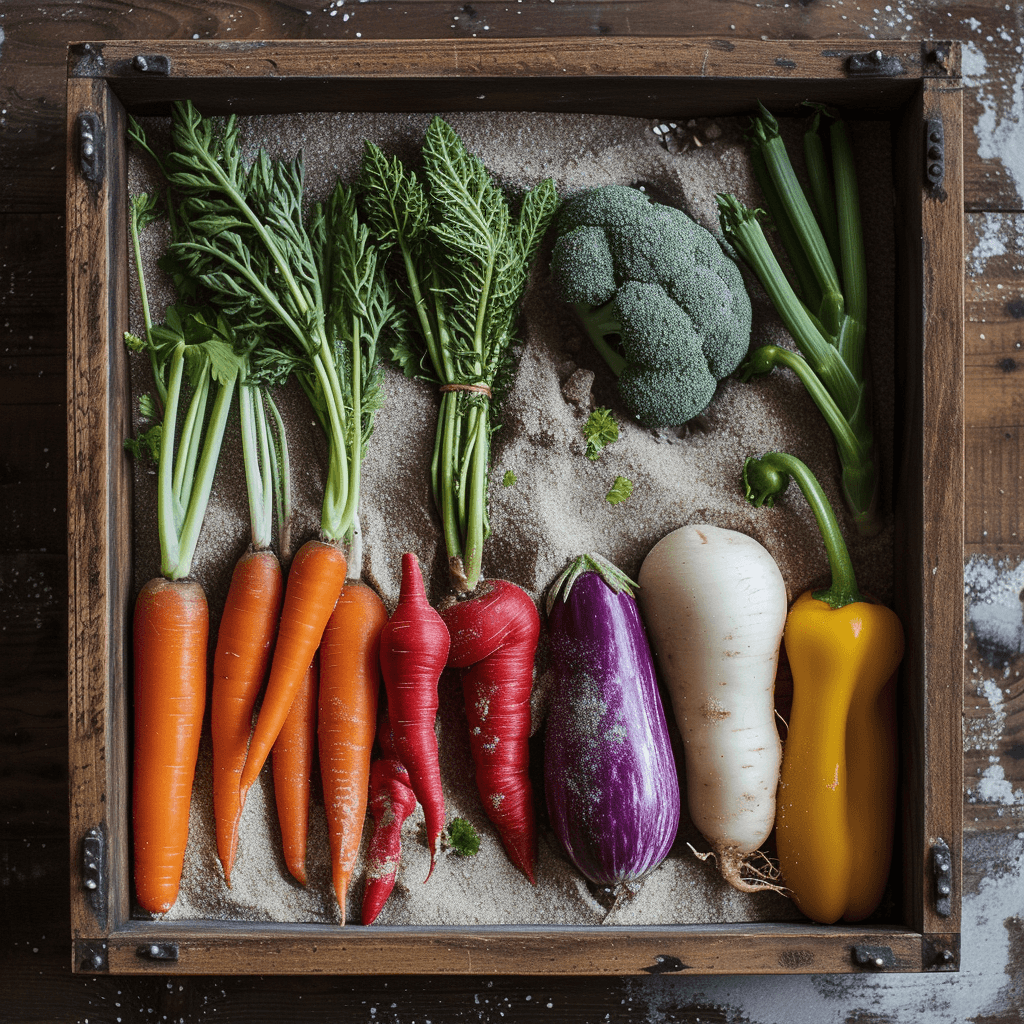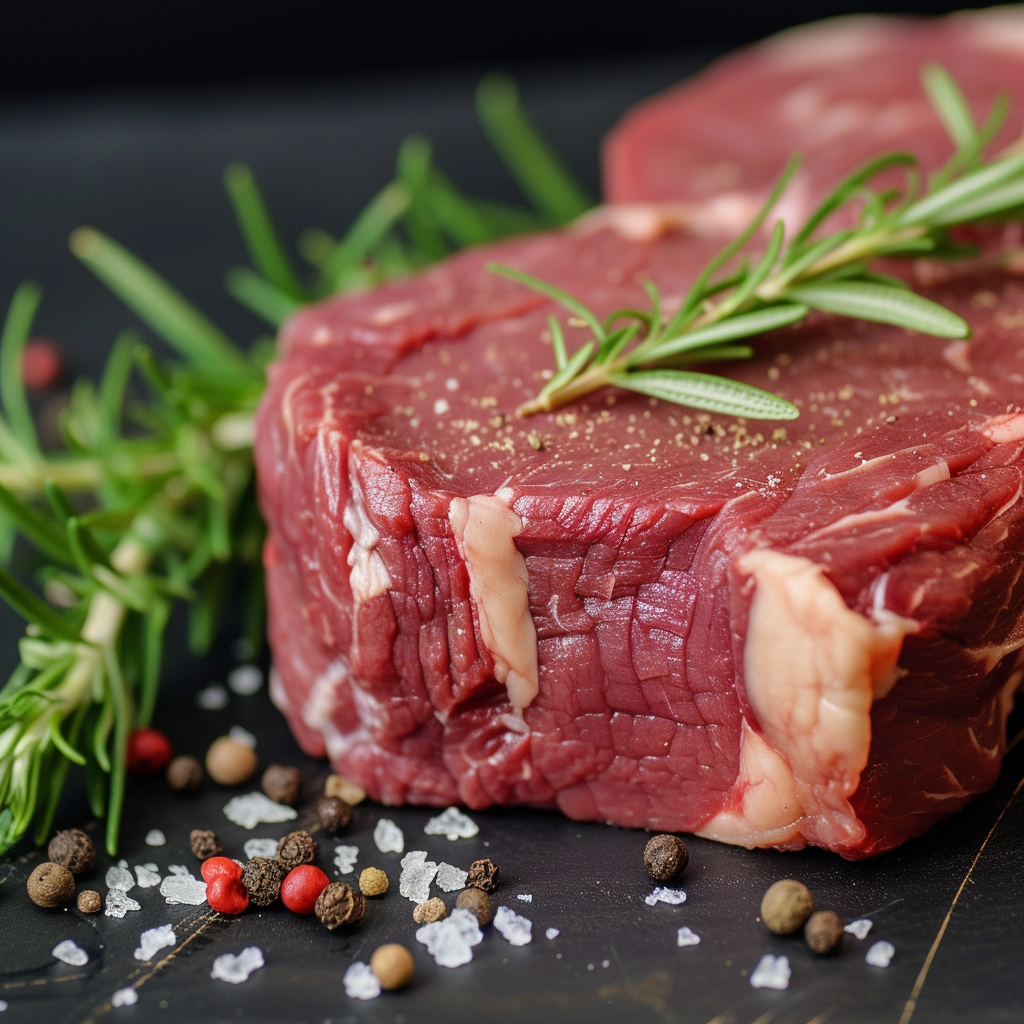So, you’re interested in off-grid living and you’re wondering how do you preserve food without freezing or canning? Well, you’ve come to the right place. Today, we’re going to delve into some sustainable preservation methods that will help you make the most out of your harvested or store-bought produce, all while living off the grid.
One effective method is dehydration. By removing the moisture from your fruit, vegetables, or even meat, you can significantly extend their shelf life. Dehydrating food is a simple and natural process that can be done using the sun, an oven, or a food dehydrator. In our upcoming article, we’ll go into more detail on how you can implement this method in your off-grid lifestyle.
Another way to preserve food off-grid is through fermentation. This might sound intimidating at first, but it’s actually a fairly simple and fascinating process. By harnessing the power of good bacteria, you can transform perishable foods into probiotic-rich, long-lasting delights. From sauerkraut to kimchi, fermented foods not only have an extended shelf life but also provide countless health benefits. We’ll walk you through the steps in our next article, so stay tuned.
Lastly, we can’t forget about root cellaring. This age-old method involves storing your fruits and vegetables in a cool, dark, and humid environment. It’s a great way to keep produce fresh for months, and it requires minimal energy. You can convert an underground basement or build a root cellar to create the ideal conditions for long-term storage. In our article on sustainable preservation methods for food, we’ll explore this technique further and provide useful tips to help you get started.
In our upcoming article, we’ll dive even deeper into these sustainable preservation methods, giving you the knowledge and tools you need to preserve your food without relying on conventional techniques. So, whether you’re planning on living off-grid or simply looking for more sustainable ways to reduce food waste, be sure to check out our comprehensive guide.
Sustainable Preservation Methods for Food
Food preservation has been practiced for centuries to ensure the availability of food during times when fresh produce is not readily available. Traditional methods such as drying, fermenting, smoking, salting, and pickling have been widely used to extend the shelf life of various food items. However, with the increasing concern for sustainability, it is important to explore and adopt preservation techniques that are environmentally friendly and resource-efficient. In this article, we will delve into sustainable preservation methods for food, their importance, benefits, and their application in different contexts.
Introduction to Sustainable Preservation Methods
Sustainable preservation methods refer to techniques that not only prolong the shelf life of food but also minimize waste, reduce energy consumption, and have a minimal impact on the environment. These methods aim to preserve the nutritional value and flavor of food while minimizing the use of artificial additives and preservatives.
Importance of Sustainable Preservation Methods
Sustainable preservation methods play a crucial role in reducing food waste and ensuring food security. By preserving food, we can extend the availability of fresh produce, reduce the reliance on industrial food production, and promote self-sufficiency. Additionally, sustainable preservation methods allow us to maximize the use of seasonal produce and minimize the ecological footprint associated with long-distance transportation of food.
Benefits of Sustainable Preservation Methods
- Reduced food waste: Sustainable preservation methods help prevent food spoilage, thereby reducing the amount of food that goes to waste. This is especially important considering that approximately one-third of the world’s food production is wasted each year.
- Energy efficiency: Many sustainable preservation methods require minimal energy consumption compared to traditional techniques such as freezing and canning. This reduces greenhouse gas emissions and contributes to a more sustainable food system.
- Minimal use of additives: Sustainable preservation methods often rely on natural processes and do not require the use of artificial additives or preservatives. This ensures that the preserved food retains its natural taste, texture, and nutritional value.
- Cost-effective: Sustainable preservation methods are often more affordable than traditional methods, as they require minimal investment in specialized equipment or infrastructure. This makes them accessible to a wider range of individuals, including those in developing countries or urban settings.
Now, let’s explore some traditional and modern sustainable preservation methods used for different types of food.
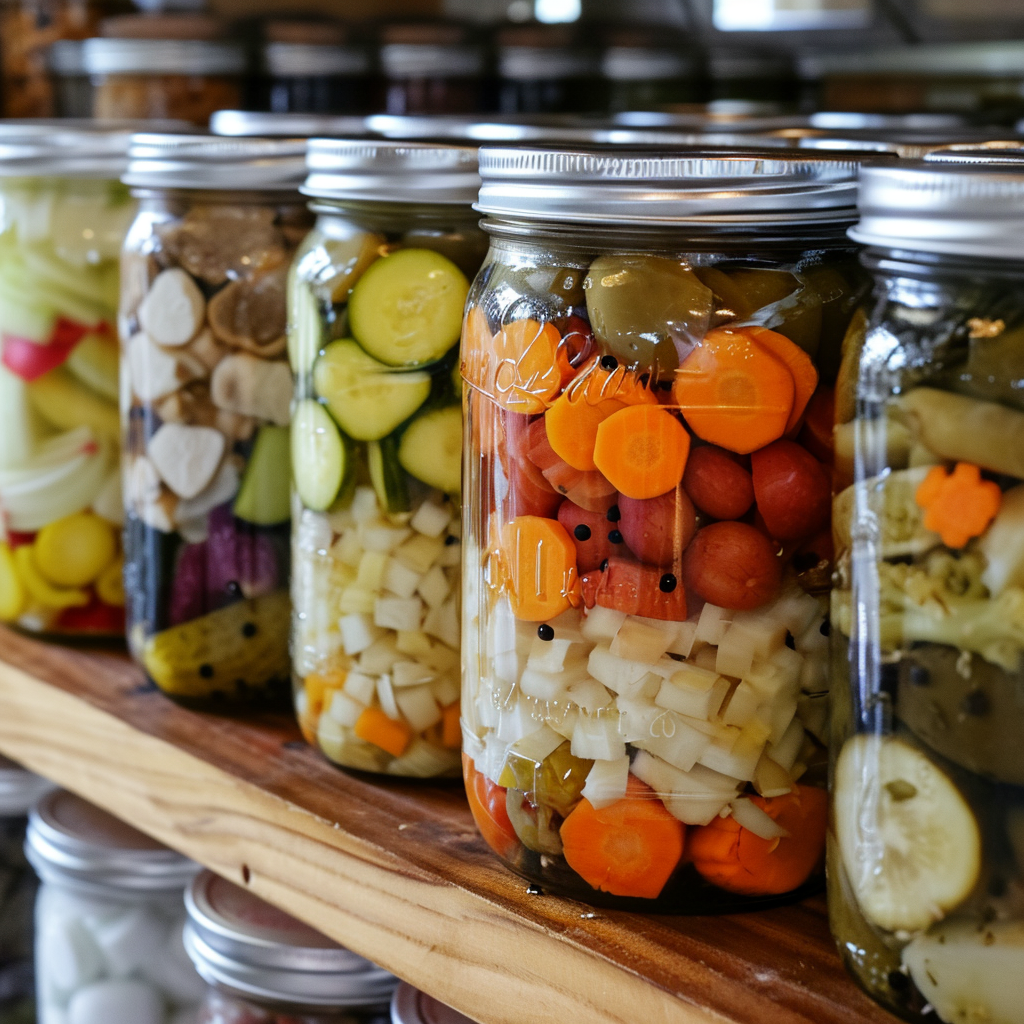
Traditional Food Preservation Techniques
Drying
Drying is one of the oldest and simplest methods of preserving food. It involves removing moisture from the food, which inhibits the growth of bacteria and molds. This method is commonly used for fruits, vegetables, herbs, and meat. Dried food can be stored for an extended period and rehydrated when needed.
Fermentation
Fermentation is a natural process that converts carbohydrates into alcohol or organic acids using microorganisms such as bacteria, yeast, or fungi. This method is commonly used to preserve vegetables, fruits, dairy products, and beverages. Fermented foods not only have an extended shelf life but also provide the additional benefit of probiotics, which promote gut health.
Smoking
Smoking involves exposing food to smoke from burning wood or other plant materials. The smoke acts as a preservative by imparting antimicrobial properties and inhibiting the growth of bacteria. This method is commonly used for preserving meat, fish, and cheese. Smoked foods also acquire a unique and rich flavor.
Salting
Salting, also known as dry curing, involves covering food with salt to draw out moisture, which inhibits bacterial growth. This method is commonly used for preserving meat and fish. Salted foods have a longer shelf life and can be enjoyed without the need for refrigeration.
Pickling
Pickling involves immersing food in a solution of vinegar or brine (saltwater) to create an acidic environment hostile to bacterial growth. This method is commonly used for preserving vegetables, fruits, and eggs. Pickled foods provide a tangy flavor and can be enjoyed as a side dish or added to various recipes.
Modern Sustainable Preservation Methods
While traditional preservation techniques are still widely used, modern sustainable preservation methods have emerged to address the need for more efficient and environmentally friendly practices. Let us discuss some of these methods:
Vacuum Sealing
Vacuum sealing involves removing air from the packaging of food items to create a vacuum, preventing the growth of aerobic bacteria and other microorganisms. This method is commonly used for preserving perishable items such as meat, seafood, and cheese. Vacuum-sealed food can be stored in the refrigerator or freezer and maintains its freshness for an extended period.
Dehydration
Dehydration, similar to traditional drying, involves removing moisture from food. However, modern dehydrators use controlled heat and air circulation to speed up the process, ensuring consistent results. Dehydrated food retains its nutritional value and can be rehydrated or consumed as a snack. This method is commonly used for fruits, vegetables, herbs, and jerky.
Freeze Drying
Freeze drying is a method that involves freezing food at extremely low temperatures and then gradually reducing the surrounding pressure to remove moisture as vapor. This process preserves the cellular structure of the food, resulting in minimal loss of flavor, texture, and nutrients. Freeze-dried food has a long shelf life and is lightweight, making it suitable for camping, hiking, and emergency food supplies.
Root Cellars
Root cellars are underground storage spaces specifically designed to provide cool and stable temperatures for the preservation of fruits, vegetables, and root crops. These structures utilize the natural insulation of the earth to create an environment that mitigates temperature fluctuations, ensuring that the produce stays fresh and viable for a longer time. Root cellars can be built in backyard gardens or adapted from existing structures.
Pressure Canning
Pressure canning is a method that involves using high-pressure steam to create an airtight seal on food containers, such as jars or cans. This method is commonly used for preserving low-acid foods like meat, fish, and vegetables that require higher temperatures to eliminate the risk of bacterial contamination. Pressure-canned foods can be safely stored at room temperature for extended periods.
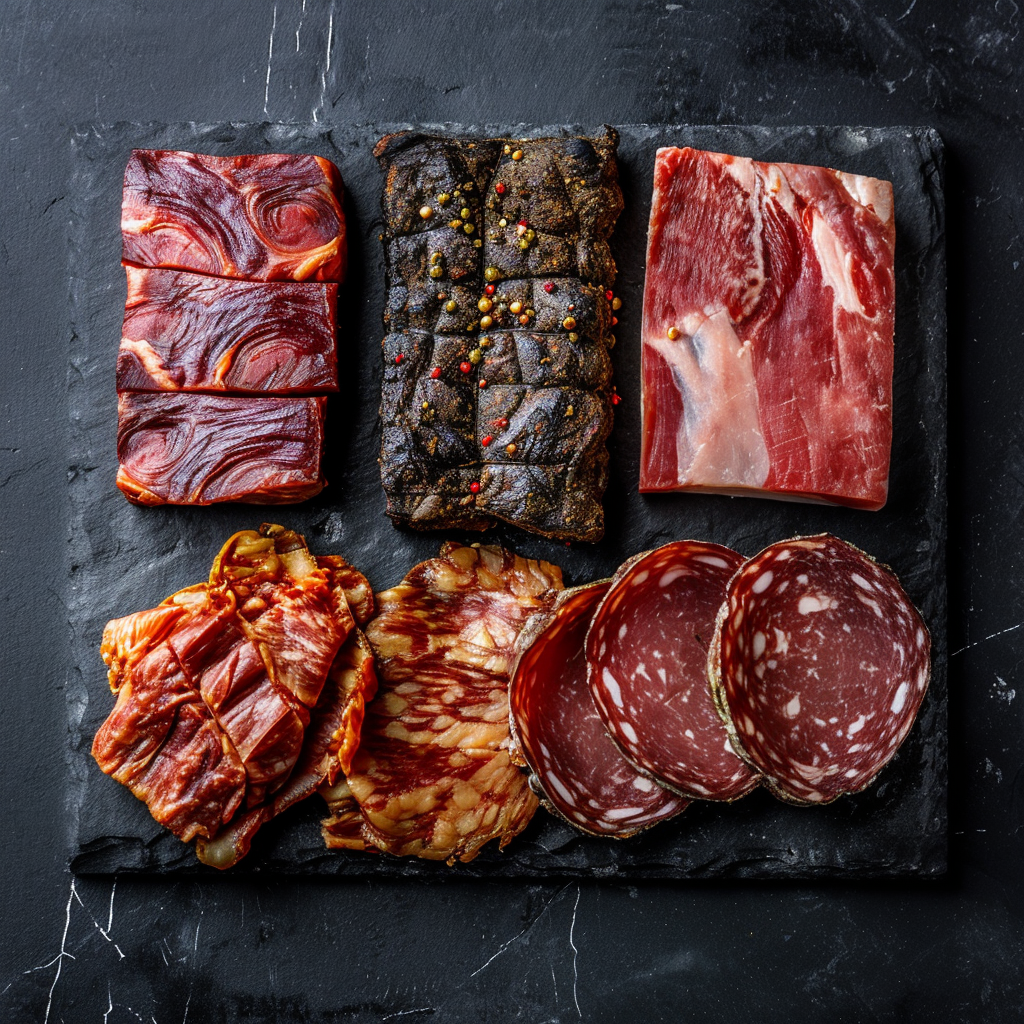
Sustainable Preservation Methods for Fruits and Vegetables
Now let’s explore some sustainable preservation methods specifically tailored for fruits and vegetables:
Canning
Canning involves preserving fruits and vegetables by heating them in jars or cans to kill bacteria and other microorganisms, followed by sealing them to create an airtight environment. This method utilizes boiling water or pressure canning techniques, depending on the acidity level of the food. Canned fruits and vegetables retain their nutritional value and can be stored at room temperature for a long time.
Fermenting
Fermentation is not only a traditional preservation method but also a sustainable one when it comes to fruits and vegetables. By harnessing the natural process of fermentation, fruits and vegetables can be transformed into tangy and flavorful products such as sauerkraut, kimchi, and pickles. Fermented fruits and vegetables provide the added health benefit of probiotics and have an extended shelf life.
Freezing
Freezing is a popular preservation method that involves reducing the temperature of fruits and vegetables to below freezing point, inhibiting the growth of bacteria and enzymes. This method retains the nutritional value, texture, and flavor of the produce. Frozen fruits and vegetables can be stored for an extended period and are commonly used in smoothies, soups, and other recipes.
Solar Drying
Solar drying, also known as sun drying, harnesses the power of the sun to remove moisture from fruits and vegetables. This method requires minimal energy consumption and relies on the natural heat and airflow to dehydrate the produce. Solar-dried fruits and vegetables can be stored in airtight containers and used in various culinary applications, such as baking, trail mixes, or snacks.
Salt Preservation
Salt preservation, similar to salting, involves using salt to inhibit bacterial growth in fruits and vegetables. This method is commonly used for preserving olives, lemons, and other types of produce. Salt-preserved fruits and vegetables have a unique flavor profile and can be used in salads, sauces, or as a condiment.
Sustainable Preservation Methods for Meat and Fish
Preserving meat and fish is particularly challenging as they are highly perishable and prone to bacterial growth. However, sustainable preservation methods can help extend their shelf life while maintaining their quality:
Smoking
Smoking is a sustainable preservation method that imparts flavor and preserves meat and fish by exposing them to smoke from burning wood. The smoke acts as a natural preservative, inhibiting bacterial growth and extending the shelf life of the products. Smoked meat and fish can be enjoyed as a standalone dish or incorporated into various recipes.
Curing
Curing involves preserving meat and fish by using a combination of salt, sugar, and spices. This method draws out moisture, inhibiting the growth of bacteria and molds. Cured meats, such as bacon, ham, and prosciutto, have a distinct flavor and can be sliced and enjoyed on their own or added to sandwiches and other dishes.
Jerky
Jerky is a sustainable preservation method that involves dehydrating meat to remove moisture and prevent spoilage. Thin slices of meat are marinated in a mixture of spices and then dried to create a lightweight and protein-rich snack. Jerky can be made from various types of meat and is suitable for on-the-go consumption or as a protein source during outdoor activities.
Fish Salting
Salting is a traditional preservation method used for fish that involves coating the fish in salt to draw out moisture and create an inhospitable environment for bacteria. Salted fish has a prolonged shelf life and is commonly used in various cuisines worldwide. It can be rehydrated or used directly in recipes to add a unique flavor.
Meat Canning
Canning is also a sustainable preservation method for meat that involves heat processing meat in jars or cans to kill bacteria and create a sealed environment. This method allows meat to be stored at room temperature for an extended period without the need for refrigeration. Canned meat can be used in stews, soups, or sandwiches.
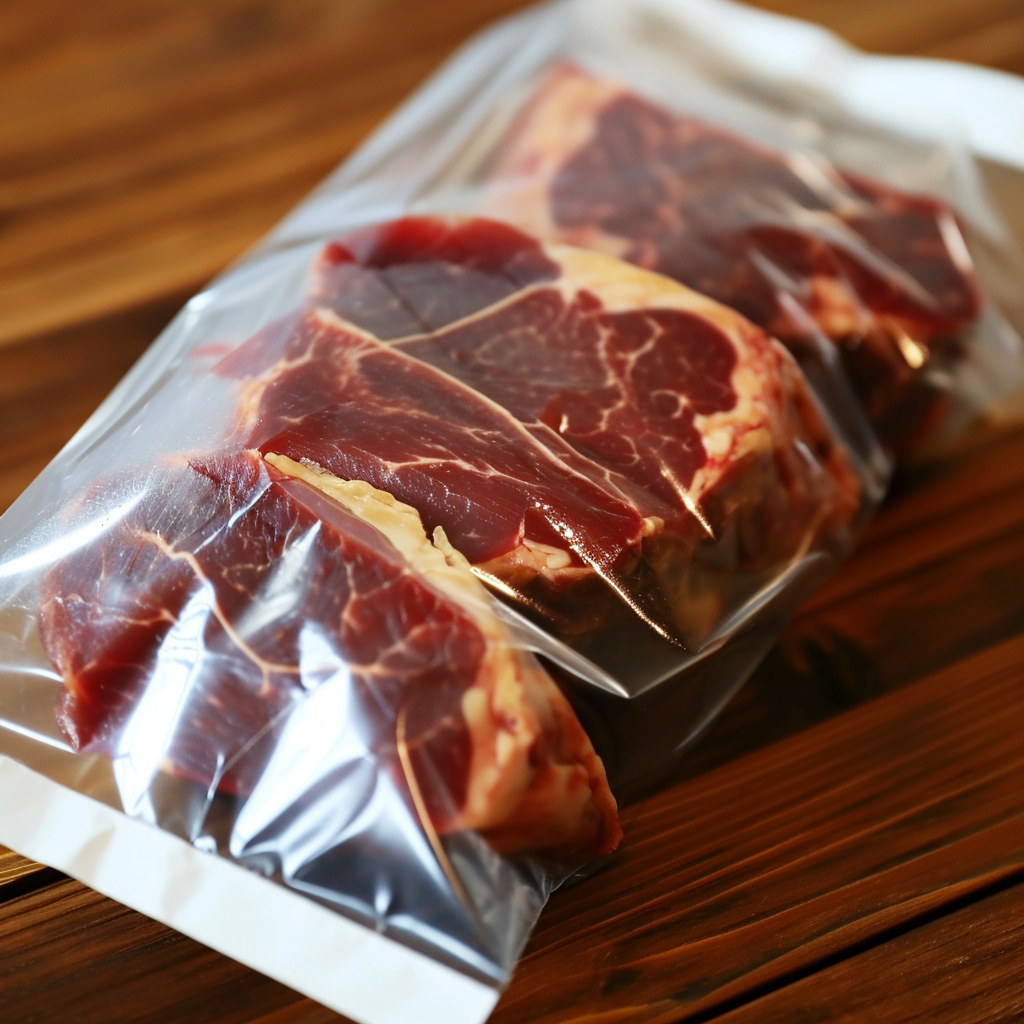
Alternative Sustainable Preservation Techniques
In addition to the traditional and modern methods discussed earlier, there are alternative sustainable preservation techniques that offer unique benefits and flavors:
Cellaring
Cellaring involves storing fruits, vegetables, and root crops in a cool, dark, and well-ventilated storage space. This method is commonly used for long-term preservation and requires minimal intervention. Cellaring helps maintain the freshness and nutritional value of the produce, making them available throughout the year.
Fermentation
Apart from its benefits for fruits and vegetables, fermentation can be used for preserving a wide range of food items, including condiments, beverages, and grains. Fermented foods offer a unique tanginess, promote gut health, and have an extended shelf life, making them an excellent addition to a sustainable food preservation arsenal.
Lacto-fermentation
Lacto-fermentation is a specific type of fermentation that uses lactic acid bacteria to convert sugars into lactic acid. This process enhances food preservation while also adding flavor and improving the digestibility of the food. Lacto-fermented foods include sauerkraut, kimchi, yogurt, and sourdough bread.
Oil Infusion
Oil infusion involves preserving herbs, spices, and even fruits or vegetables in oil to extend their shelf life and capture their flavors. The oil acts as a barrier, preventing the growth of spoilage-causing bacteria and preserving the aromatic compounds of the ingredients. Infused oils can be used in cooking or as a base for dressings and marinades.
Herb Preservation
Preserving herbs often involves drying or freezing, but there are other sustainable methods that can be employed as well. One such method is making herb-infused salt or sugar. The herbs are mixed with salt or sugar, allowing their flavors and aromas to infuse into the seasoning. Herb-infused salt or sugar can be used in cooking or as a finishing touch to various dishes.
Urban Sustainable Preservation Methods
Sustainable preservation methods are not limited to rural areas or those with ample space for traditional storage methods. Even in urban settings, individuals can adopt sustainable preservation practices:
Indoor Herb Gardens
Indoor herb gardens allow city dwellers to grow their own herbs in limited spaces. Freshly harvested herbs can be used immediately, while surplus herbs can be preserved using alternative methods discussed earlier, such as oil infusion, herb preservation in salt or sugar, or drying.
Community Food Sharing
Community food sharing initiatives involve individuals sharing their excess produce or preserved food items with others in the community. This not only reduces food waste but also fosters a sense of community and promotes sustainable consumption practices.
Food Preservation Workshops
Organizing food preservation workshops in urban areas can help educate individuals about sustainable preservation methods. These workshops can teach participants how to preserve various produce and encourage the sharing of knowledge and recipes.
Beekeeping
Beekeeping, although not directly related to food preservation, indirectly supports sustainable food practices. Bees play a crucial role in pollinating crops, ensuring their productivity and diversity. By maintaining beehives in urban areas, individuals can contribute to sustainable food systems and promote biodiversity.
Rooftop Gardening
Rooftop gardening is a popular urban sustainability practice that allows individuals to grow their own fruits, vegetables, and herbs. The produce can be consumed immediately or preserved using sustainable methods discussed earlier. Rooftop gardens utilize underutilized spaces and promote self-sufficiency and sustainable living in urban areas.

Sustainable Preservation Techniques in Developing Countries
In developing countries, where access to modern preservation methods may be limited, sustainable preservation techniques play a vital role in ensuring food security and reducing post-harvest losses:
Solar Drying
Solar drying is a low-cost and energy-efficient preservation method that is widely used in developing countries. By utilizing the abundant solar energy, fruits, vegetables, and other perishable food items can be dried and stored for future use.
Bottle Fermentation
Bottle fermentation involves preserving fruits, vegetables, and even grains in glass or plastic bottles to facilitate the natural fermentation process. This method is accessible and affordable, making it suitable for small-scale preservation at the household or community level.
Traditional Smokehouses
Traditional smokehouses have been used for centuries in various cultures to preserve meat, fish, and cheese. These simple structures utilize smoke from burning wood to impart flavor and inhibit bacterial growth.
Salt Preservation
Salt preservation, as previously discussed, is a traditional method accessible to communities with limited resources. By salting fish, meat, or vegetables, individuals can prevent spoilage and extend the shelf life of food items.
Food Preservation Cooperatives
Food preservation cooperatives can be established in rural or marginalized communities to promote collective efforts in preserving surplus produce. These cooperatives can provide training, resources, and shared storage facilities, enabling members to preserve and store food for future use or sale.
Challenges and Solutions in Sustainable Food Preservation
While sustainable preservation methods offer numerous benefits, there are still challenges that need to be addressed:
Storage Space Limitations
Storage space can be a limitation, particularly in urban areas or for households with limited space. However, creative solutions such as using vertical storage systems, under-bed storage, or communal storage facilities can help maximize available space.
Energy Consumption
Some preservation methods, especially those involving heat, require energy consumption. However, adopting energy-efficient appliances, utilizing renewable energy sources, and optimizing preservation techniques can help minimize energy consumption.
Food Safety
Ensuring food safety during preservation is crucial. Proper hygiene practices, following recommended guidelines for each preservation method, and using high-quality ingredients are essential to prevent foodborne illnesses.
Preservation Equipment Costs
Investing in preservation equipment can be costly, particularly for individuals or communities with limited resources. However, alternative methods such as solar drying, fermentation in readily available containers, or communal equipment-sharing initiatives can help overcome this challenge.
Seasonal Availability of Fresh Produce
Preserving food relies on the availability of fresh produce. However, many preservation methods, such as canning or freezing, allow individuals to capture the flavors and nutrients of seasonal produce for consumption throughout the year.
Conclusion
Sustainable preservation methods are essential for reducing food waste, promoting self-sufficiency, and ensuring food security. By adopting these methods, individuals can contribute to a more sustainable food system while enjoying the benefits of longer-lasting and nutritious food. Whether you are living off the grid, an urban dweller, or residing in a developing country, there are various preservation techniques suitable for your needs. Embrace these methods and play your part in creating a more sustainable future.


